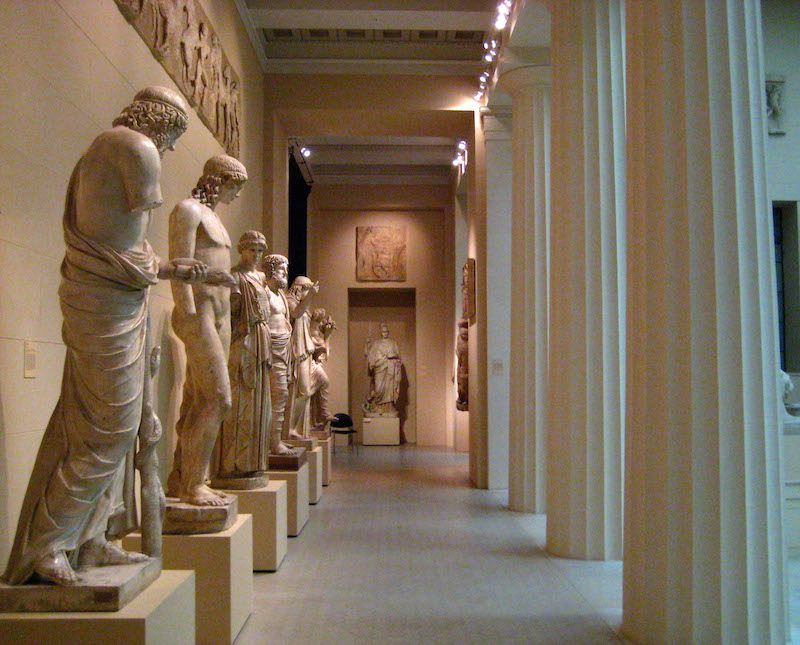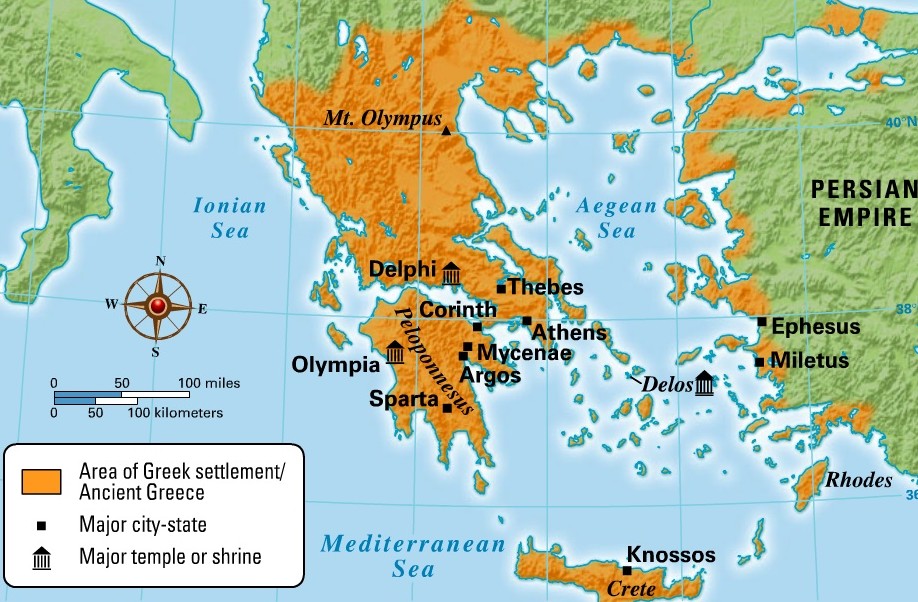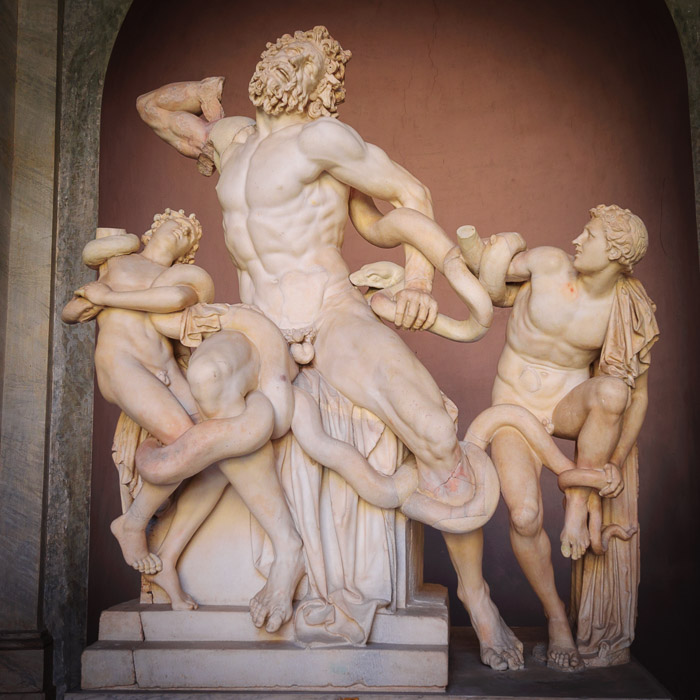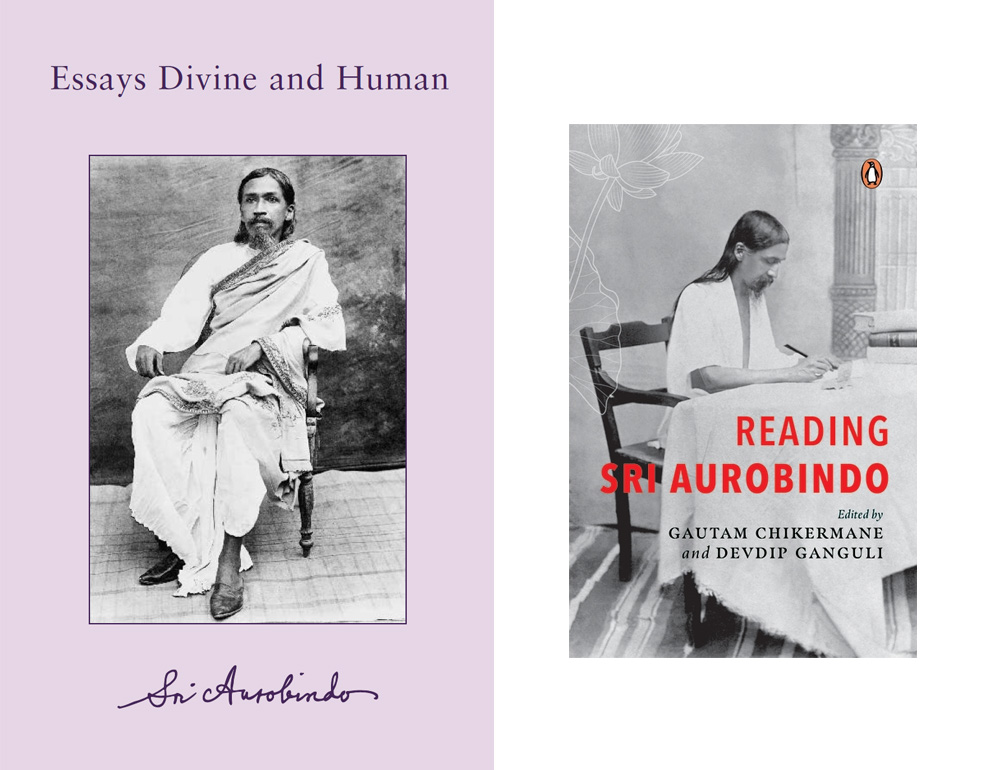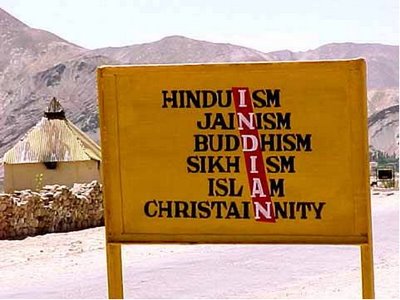“Architecture, sculpture and painting, because they are the three great arts which appeal to the spirit through the eye, are those too in which the sensible and the invisible meet with the strongest emphasis on themselves and yet the greatest necessity of each other.” [1]The Foundations of Indian Culture, by Sri Aurobindo, Indian Art – 2
Where are the Sculptors?
Try and name three sculptors – from anywhere.
Hard, isn’t it? Amongst the moderns, we may be able to muster the names of Rodin, or Michelangelo. If we previously looked for him, we may have even heard of Phidias, who we are told, was to sculpture what Homer was to poetry. But beyond these names? We hear and know of musicians, of poets, of painters even, but sculptors are in a way a “rare” species. What is it about sculpting that makes such extraordinary demands on the artist?

The Caryatid Porch at the Erechtheion, Athens
On the Art of Sculpture
What demands does the art of sculpting make on the artist?
“…the art of making in stone or bronze calls for a cast of mind which the ancients had and the moderns have not or have had only in rare individuals, an artistic mind not too rapidly mobile and self-indulgent, not too much mastered by its own personality and emotion and the touches that excite and pass, but founded rather on some great basis of assured thought and vision, stable in temperament, fixed in its imagination on things that are firm and enduring. One cannot trifle with ease in these sterner materials, one cannot even for long or with safety indulge in them in mere grace and external beauty or the more superficial, mobile and lightly attractive motives. The aesthetic self-indulgence which the soul of colour permits and even invites, the attraction of the mobile play of life to which line of brush, pen or pencil gives latitude, are here forbidden or, if to some extent achieved, only within a line of restraint to cross which is perilous and soon fatal. Here grand or profound motives are called for, a more or less penetrating spiritual vision or some sense of things eternal to base the creation. The sculptural art is static, self-contained, necessarily firm, noble or severe and demands an aesthetic spirit capable of these qualities….” [2]ibid
A few years ago, I came across this wonderful documentary on Michelangelo, and a part of it touched upon the art of sculpting, the process of creation and the unfolding vision of the artist from a block of stone. Utterly fascinating, and perhaps a “must-watch” before visiting Rome or ancient Greece. BBC’s excellent production on Michelangelo.
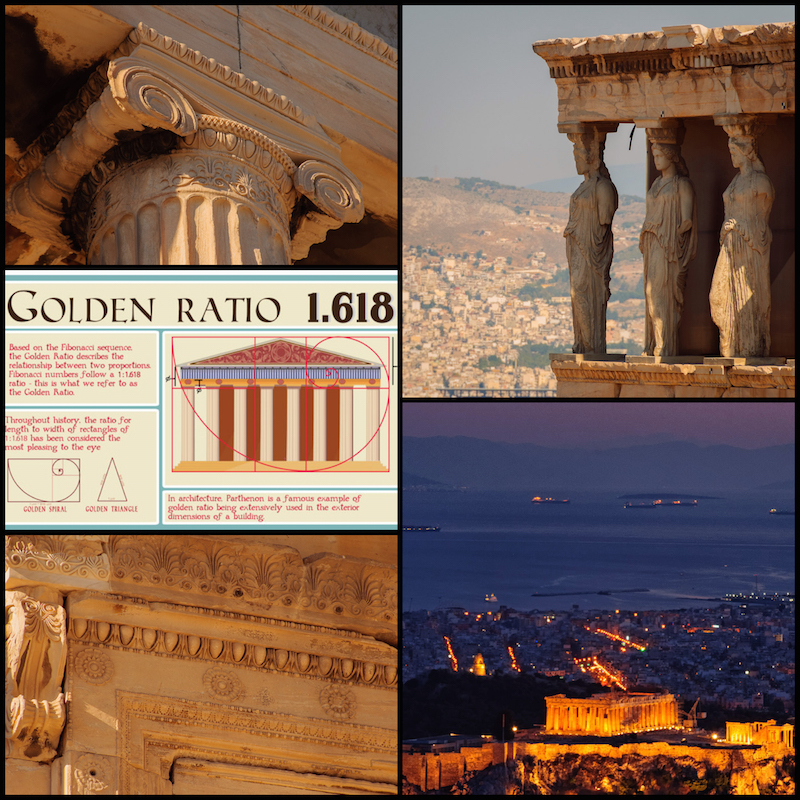
If there is one picture that anyone can identify with Greece – it is the Parthenon in Athens, and sure enough – it was Phidias who was its chief artist and designer. Can you imagine a single person being the chief architect, and the chief sculptor and the chief painter of any project? Ancient Egypt and Greece and India are full of such multi-faceted geniuses and personalities who seem so intensely rich and composite that they are almost alien to our modern single-speciality societies.
And what characterized the expressive power of Phidias?

Phidias, the Master sculptor, painter and architect of Greece
The Olympian gods of Phidias
“The Olympian gods of Phidias are magnified and uplifted human beings saved from a too human limitation by a certain divine calm of impersonality or universalised quality, divine type, guna; in other work we see heroes, athletes, feminine incarnations of beauty, calm and restrained embodiments of idea, action or emotion in the idealised beauty of the human figure.” [3]ibid
Integrality in expression
“In the old days, I mean in the artistic ages, as for instance in Greece or even during the Italian renaissance (but much more in Greece and Egypt), buildings were made for public utility. Mostly too, in Greece and Egypt, a kind of sanctuary was built to house their gods. Well, what they tried to do was something total, beautiful in itself, complete. And in that they used architecture, that is to say, the sense of harmony of lines, and sculpture to add to architecture the detail of expression, and painting to complete this expression, but all this was held in a coordinated unity which was the created monument. The sculpture formed a part of the building, the painting was a part of the building. These were not things apart, just put there one knew not why—they belonged to the general plan. And so, when these people made a temple, for example, it was a whole wherein were found almost all the manifestations of art, united in a single will to express the beauty they wished to express, that is, a garment for the god they wished to adore.” [4]Collected Works of Mirra Alfassa, Volume 5, page 338
On the link between Sculpture and Architecture
“The art of sculpture has indeed flourished supremely only in ancient countries where it was conceived against its natural background and support, a great architecture. Egypt, Greece, India take the premier rank in this kind of creation. Mediaeval and modern Europe produced nothing of the same mastery, abundance and amplitude, while on the contrary in painting later Europe has done much and richly and with a prolonged and constantly renewed inspiration…” [5]The Foundations of Indian Culture, by Sri Aurobindo, Indian Art – 2
The great periods of Sculpture
Just as we see in poetry, the impact, and durability of all great artistic creation depends much on the profoundness of the Vision, of the self-recognizing idea of the civilization or nation. The higher the conception, the greater the capacity for self-renewal.
“Hellenic sculpture following this line passed from the greatness of Phidias through the soft self-indulgence of Praxiteles to its decline. A later Europe has failed for the most part in sculpture, in spite of some great work by individuals, an Angelo or a Rodin, because it played externally with stone and bronze, took them as a medium for the representation of life and could not find a sufficient basis of profound vision or spiritual motive. [6]Ibid.
On Greek Style
“A fine, outward physical harmony of nobility or grace”
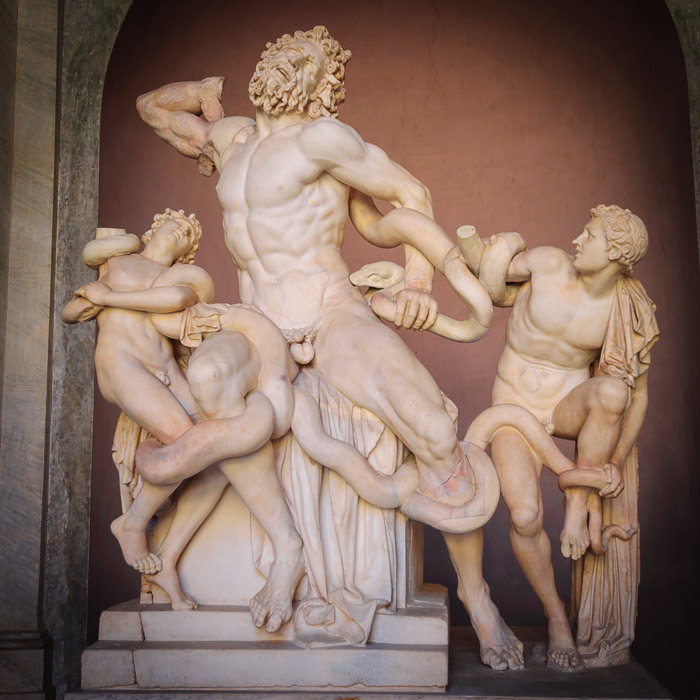
“Laocoön and His Sons”. In Western art, this statue is the “Prototypical icon of human agony”, and is considered “one of the finest examples of the Greek baroque”. On permanent display at the Vatican, in Rome
“The earlier and more archaic Greek style had indeed something in it which looks like a reminiscent touch of a first creative origin from Egypt and the Orient, but there is already there the governing conception which determined the Greek aesthesis and has dominated the later mind of Europe, the will to combine some kind of expression of an inner truth with an idealising imitation of external Nature. The brilliance, beauty and nobility of the work which was accomplished, was a very great and perfect thing, but it is idle to maintain that that is the sole possible method or the one permanent and natural law of artistic creation. Its highest greatness subsisted only so long—and it was not for very long—as a certain satisfying balance was struck and constantly maintained between a fine, but not very subtle, opulent or profound spiritual suggestion and an outward physical harmony of nobility and grace. A later work achieved a brief miracle of vital suggestion and sensuous physical grace with a certain power of expressing the spirit of beauty in the mould of the senses; but this once done, there was no more to see or create..” [7]Ibid.
What Greek art did not express
“And it is surely time for us to see, as is now by many admitted, that an acknowledgment of the greatness of Greek art in its own province ought not to prevent the plain perception of the rather strait and narrow bounds of that province.
What Greek sculpture expressed was fine, gracious and noble, but what it did not express and could not by the limitations of its canon hope to attempt, was considerable, was immense in possibility, was that spiritual depth and extension which the human mind needs for its larger and deeper self-experience.
And just this is the greatness of Indian sculpture that it expresses in stone and bronze what the Greek aesthetic mind could not conceive or express and embodies it with a profound understanding of its right conditions and a native perfection.” [8]Ibid.
How do we appreciate the intention behind an artistic work, how are we to put our baggage of past ideas aside and discover the spirit behind the form? See On Critiquing Art – Form, Spirit and Intention

